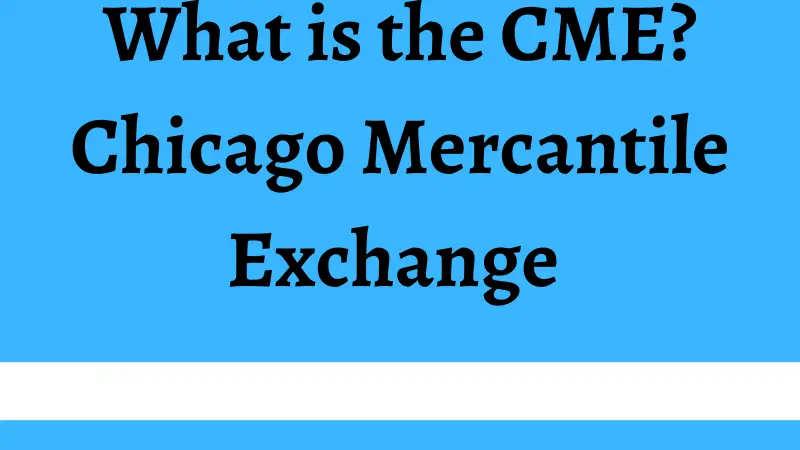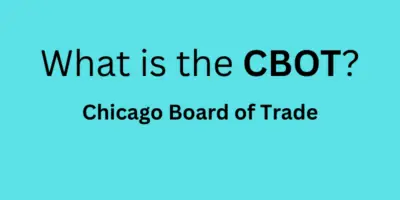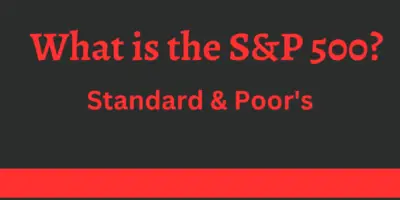What is the Chicago Mercantile Exchange?

What is the CME? The Chicago Mercantile Exchange (CME) is a global derivatives marketplace based in Chicago, Illinois. It was founded in 1898 as the Chicago Butter and Egg Board and became the Chicago Mercantile Exchange in 1919.
Today, the CME trades in a wide range of financial products, including futures and options on interest rates, equity indexes, foreign currencies, commodities, and alternative investments such as weather and real estate. The CME is one of the largest futures exchanges in the world, with trading volume exceeding 5 billion contracts annually. The exchange is regulated by the Commodity Futures Trading Commission (CFTC) and is a member of the Intercontinental Exchange (ICE) group of exchanges.
How Does the CME Work?
The Chicago Mercantile Exchange (CME) is a marketplace where buyers and sellers can trade futures and options contracts based on a wide range of financial products. Here’s how it works:
Contract Creation
The CME creates standardized contracts that specify the underlying asset, the quantity to be traded, the price, and the delivery date. These contracts are traded on the exchange, and buyers and sellers can enter into agreements to buy or sell them.
Trading
Traders can trade contracts in two ways: in the trading pit or electronically. In the trading pit, traders gather in a physical location on the trading floor and use hand signals and verbal communication to buy and sell contracts. In electronic trading, traders use a computer system to enter orders and execute trades.
Margin Requirements:
To ensure that traders can meet their obligations under the contract, the CME requires them to post margin, which is a certain amount of cash or other assets that must be deposited with the exchange. The margin amount varies depending on the contract and the trader’s risk profile.
Settlement
At the end of the contract’s life, settlement occurs, which means that the parties involved in the trade exchange money or assets based on the contract’s terms. Settlement can be physical, which means that the underlying asset is delivered, or it can be cash-settled, which means that the parties exchange cash based on the contract’s value.
Clearing
The CME acts as a central counterparty to all trades, meaning that it guarantees the performance of each trade. This is done through a process called clearing, where the CME becomes the buyer to every seller and the seller to every buyer. This helps to mitigate the risk of default by any individual trader.
Brief History of the Chicago Mercantile Exchange
The Chicago Mercantile Exchange (CME) has a long and interesting history that dates back to the late 19th century. Here are some key milestones:
1898: The Chicago Butter and Egg Board is founded to provide a centralized location for trading in butter and eggs.
1919: The Chicago Butter and Egg Board changes its name to the Chicago Mercantile Exchange and expands its product offerings to include commodities such as cheese, milk, and poultry.
1961: The CME launches the first futures contracts for frozen pork bellies, which become a popular hedging tool for the pork industry.
1972: The CME introduces the first financial futures contract, which is based on the value of the S&P 500 stock index.
1982: The CME becomes the first exchange to trade options on futures contracts.
2002: The CME launches electronic trading, which allows traders to buy and sell contracts electronically rather than through a trading pit.
2007: The CME acquires the Chicago Board of Trade (CBOT), which had been its biggest rival in the trading of agricultural commodities and financial futures.
2010: The CME merges with the New York Mercantile Exchange (NYMEX), which is the world’s largest physical commodity futures exchange.
2020: The CME becomes the world’s largest futures exchange by trading volume, surpassing the Intercontinental Exchange (ICE).
2023: CME Group Announced on March 13 as the First Day of Trading of Event Contracts on Bitcoin Futures
What Are the Four CME Exchanges?
The Chicago Mercantile Exchange (CME) operates several exchanges that offer futures and options trading in a variety of financial products. Here are the main exchanges operated by the CME:
- CME Exchange: This is the main exchange of the CME, where a wide range of financial products are traded, including interest rates, equity indexes, foreign currencies, commodities, and alternative investments such as weather and real estate.
- Chicago Board of Trade (CBOT): The CBOT is one of the oldest futures exchanges in the world, and is now part of the CME group. It trades in agricultural commodities such as corn, wheat, soybeans, and rice, as well as financial futures such as Treasury bonds and notes.
- New York Mercantile Exchange (NYMEX): The NYMEX is the world’s largest physical commodity futures exchange, and was acquired by the CME group in 2008. It trades in energy products such as crude oil, natural gas, and heating oil, as well as metals and other commodities.
- Commodity Exchange Inc. (COMEX): The COMEX is a division of the NYMEX that trades in metals futures, including gold, silver, and copper.
The Importance of the CME
The CME is important because it plays a critical role in the functioning of the financial markets, providing a platform for price discovery, risk management, liquidity, and economic growth. If the CME didn’t exist the markets for products such as; commodities, currencies, interest rates, etc would be less efficient, and it would be harder for market participants to manage their risk exposures. This could lead to increased volatility in the financial markets and make it more difficult for businesses to hedge against price fluctuations in the underlying assets.
The absence of the CME could also have a ripple effect throughout the financial system, as many other financial institutions rely on its products and services. Overall, its importance extends far beyond its physical location in Chicago and has a significant impact on the global economy.
How to Contact The CME?
If you need to contact the Chicago Mercantile Exchange (CME), you can use the following contact information:
Website: The CME’s official website is www.cmegroup.com. You can access information on their products, services, and news, as well as contact information for specific departments.
Phone: The CME’s general phone number is (312)-930-1000. You can call this number to be directed to the appropriate department or to speak with a customer service representative.
Email: You can send an email to the CME at info@cmegroup.com. This email address can be used for general inquiries, but for more specific issues, it’s recommended to use the contact information on the CME’s website.
Address: The CME’s headquarters are located at 20 South Wacker Drive, Chicago, Illinois, 60606. If you need to send mail or visit their offices in person, this is the address you should use.
Social Media: The CME can also be contacted through their social media channels, including Twitter, LinkedIn, and Facebook. These channels can be used for general inquiries and to keep up-to-date with the latest news and events from the CME.


